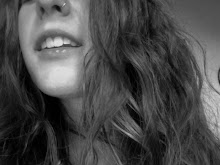Of the many questions we were asked to ponder in class I have continued to focus on the question "What does it mean to make an unresolved map?" Creating something without resolution provides the viewer with initial questions. They are forced to question the work and ask its significance. Providing unanswered questions creates an immediate conversation and connection with the viewer to the work. It allows them to think deeper than what is presented to them and also allows the freedom for creative interpretation. This relates to the many unanswered questions in life. The human need to seek answers to questions keeps us thinking critically and creatively. Asking questions is what sets us apart as a species. We have the ability to analyze and generate new ideas based on the information given to us. Our advancements as a species rely on our ability to process information, ask how it pertains to us, and resolve these questions to meet our needs. In the world of maps, irresolution immediately acts as a questionable problem because of the practical nature of a map. A map is intended to provide information that can be manipulated to the viewer according to their intentions. The beauty of an unresolved map is its ability to strip the natural connotation of the word and create a new conceptual realm. An unresolved map speaks more about mapping itself than the function of a map. The intentions behind the act of mapping dictates the resolution or irresolution of the final map. An unresolved map functions through itself, while a resolved map requires the use of another's interests or needs to function accordingly.
My project ideas reflect the reoccurring theme, "Tension of the Present" discussed in the reading, in both the process and content of my future project. I am at a difficult point in the process since two completely separate ideas contradict my decision making on how to address the project. I always debate making work that directly relates to my life. I teeter on the line where cliches and things that matter to me intersect in the concepts of the piece. I find it difficult to distinguish between personal interests and cliches. When I begin to think about making work that directly speaks about my personal experiences and memories they seem to take on a form of cliche where these experiences seem like they are no longer mine. Making art directly about myself and my personal experiences tends to make them less of an experience to me. I feel like my imitation or re-creation of the experience will never justify itself in relation to the actual event. I ask, "why would anyone care about my personal experiences?" "why should anyone care about my personal experiences?" which then reverts me from using such subject matter.
That said, my first project idea is to create a map of my yearly experiences to our family cabin in northern Wisconsin. I would use a map of the lake and the area and draw on top of it/manipulate it in layers of my experiences. I've taken an annual trip to the cabin every summer since I was born. The people we went with changed over the years and the place itself was eventually remodeled, but the experiences remain the same. After creating my map, marking the experiences and drawing images of the occurrences, I would like to generate the same blank map I started with and present one to each of my family members for them to do the same; record their life experiences at the cabin. After getting these back I would like to manipulate them to read on top of each other in layers, showing one map of the place and the experiences embedded in the land. It will act both as a representational map of the land and a map of experiences and memories.
My second idea for the mapping project removes any kind of personal attachment to the land and reflects my interests and fascinations. Lately I have learned about the existence of the underground city of Derinkuyu in Turkey. It exists 85m underground and with 18 stories, it is the largest of many underground cities built in Cappadocia. The underground city was able to accommodate nearly 20,000 people with areas built for not only living spaces, but also tombs, shops, wells, and areas for livestock. It is equipped with ventilation shafts and flowing fresh water and even air conditioning. The structure also has large rolling doors, creatively fashioned to only operate from the inside of the structure, denying the entrance of any intruders.



The underground city is said to be re-used for protection and a hiding place during times of early Christians, but the original creators of the city are not completely known. It is said to be created by the Hittites who existed around 1900-1200 BC. They also used the underground city for protection from attacks and invasions. The exquisite carving and style of Derinkuyu is remarkable. The advanced nature of the carving and the individual qualities that separate Derinkuyu from the other underground cities on site suggests that it may have been built much earlier than historians have believed thus far. This brings about mysterious theories about the ancient city, which only adds to my fascination and interest about its history.
I would like to create a layered piece similar to that of Mehretu's working style. My first layer would consist of a map of Turkey and I would slowly build layers through subtraction and addition, eventually revealing the ancient underground city as the topmost layer. My map reverses the structure of the land; bringing the underground, above ground in a revealing strip of the area. It exposes the history and shares the story of a place that intends to be hidden and secret. The map will reveal what is supposed to be unseen and exposes its protective qualities.




